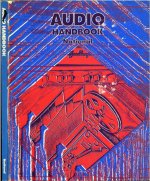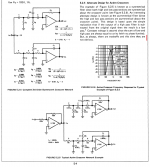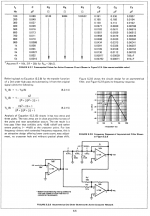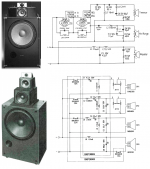Hi Ovidiu
In my opinion you are very smart and have very deep knowledge.
My question is: Why on earth do you waste your time on this thread?
In my opinion there's a lot of interesting topics to discuss and solve instead of arguing with ****** like Esperado, RNM and the like-minded.
That would be T-E aka "ma-ybe" please 😀.
Otherwise, good question, I guess I do not care to look for those "interesting topics". Or perhaps I have a subliminal urge to mop the forum floor after the usual suspects are using it for improper purposes.
OTOH, I find the ASR forum boring, there is no fun to discuss over a quarter of dB in the SNR, if that's all what's left of audio science, then...
Last edited:
I happen to think the Bybee Music Rail patent, falls entirely within conventional science and contains zero snake oil.
I happen to think the Bybee Music Rail patent, falls entirely within conventional science and contains zero snake oil.
It appears Jack hired some EEs to diversify from putting all his eggs in one snake-oil filled basket.
Still, I find the USPTO has set the bar way too low.
I happen to think the Bybee Music Rail patent, falls entirely within conventional science and contains zero snake oil.
I agree.
It also clearly shows that anything could be patented, I'm ready to place a bet I could patent today a differential stage, if carefully drawn, explained, and placed against prior art.
Thanks for the further info, KSTR. Of course it is the overlap that is problematic. The idea is both simple and wonderful!
John,
Have you ever paid attention to crossovers where one part has Fr1= H(s) and the complementary part Fr2 = 1- H(s).
In that case you will have a perfect transition no matter how steep H(s) is because [H(s)]+[1 - H(s)] = 1.
Hans
1976, National Audio Handbook
George
Attachments
Bang and Olufsen built a speaker line with a "filler driver" between woofer and midrange, fed a very narrow band signal at the crossover frequency. HP and LP filters for the woofer and midrange were 12dB/oct with a Q of 0.5 and all drivers were connected in the same DC polarity. These speakers could reproduce a square wave.
For an active filter, a biquad could be used to generate LP, filler, and HP and the filler could be added to one of the other filter outputs, eliminating the extra driver.
I wish I could remember the names of the guy from B&O and the guy who developed the active filter version, but it's gone.
All good fortune,
Chris
For an active filter, a biquad could be used to generate LP, filler, and HP and the filler could be added to one of the other filter outputs, eliminating the extra driver.
I wish I could remember the names of the guy from B&O and the guy who developed the active filter version, but it's gone.
All good fortune,
Chris
...
There was an interesting paper from Yamaha, given at an AES in 1976, that made me try them with some success. Isn't that when I first met you, Zung?
We met at the 1976 Zurich AES, but I don't recall this particular session, and I don't think it made to the journal.
Bill, you know what, I order the XLR Vahalla’s from Ali Express and compare them to the real ones.There is so much to investigate using real science, why invent flooby dust? I seriously hoped JN would discuss balanced interconnect and ground loops but he decided to argue zip cord which no one actually uses. Go figure. But no real loss to cloth eared me.
That could provide some nice measured and auditioned information.
Other than stranded cables, in the Valhalla’s the conductors are each separately isolated from each other.
I also have stranded XLR’s that can be used into the review
Let’s see what it might bring.
Hans
Thank you, that’s exactly what I had in mind.
You can use steep filters, not just 6dB/oct, preventing large overlaps.
Hans
I wish I could remember the names of the guy from B&O and the guy who developed the active filter
Eric Baekgaard (1977)
I was searching to find commercial implementation of the x-over ideas of US4015089 (1977) Linear phase response multi-way speaker system and I found the Technics SB-7000 (1976) and SB-7070 (1978).
Has anyone heard those? Opinions?
George
Attachments
That's him! Thanks.
The Technics' look pretty conventional, unlike the patent?
Much thanks, as always,
Chris
ps: the other guy might have been Samuel Groner
The Technics' look pretty conventional, unlike the patent?
Much thanks, as always,
Chris
ps: the other guy might have been Samuel Groner
Hi Hans,Bill, you know what, I order the XLR Vahalla’s from Ali Express and compare them to the real ones.
That could provide some nice measured and auditioned information.
Other than stranded cables, in the Valhalla’s the conductors are each separately isolated from each other.
I also have stranded XLR’s that can be used into the review
Let’s see what it might bring.
Hans
That would be interesting in terms of trying to tease some data out.
Hans, making a 'transient perfect' (can pass square waves when summed) filter, appears to always require an overlap, or a filler. Please read carefully the provided data, or try a computer simulation for yourself. There is 'no free lunch!'
It also clearly shows that anything could be patented, I'm ready to place a bet I could patent today a differential stage, if carefully drawn, explained, and placed against prior art.
Been done, US5103188A - Buffered transconductance amplifier
- Google Patents
John, I would not condemn a product as snake oil without clear intent of deception. Perhaps not well understood would be more appropriate for products like OCC silver interconnect wire.Get me some useful 'snake oil' and will use it!
I thought so; the Alexander amplifier CFA topology (patented at the time) is also claimed, fig. 4c.
- Status
- Not open for further replies.
- Home
- Member Areas
- The Lounge
- John Curl's Blowtorch preamplifier part IV



